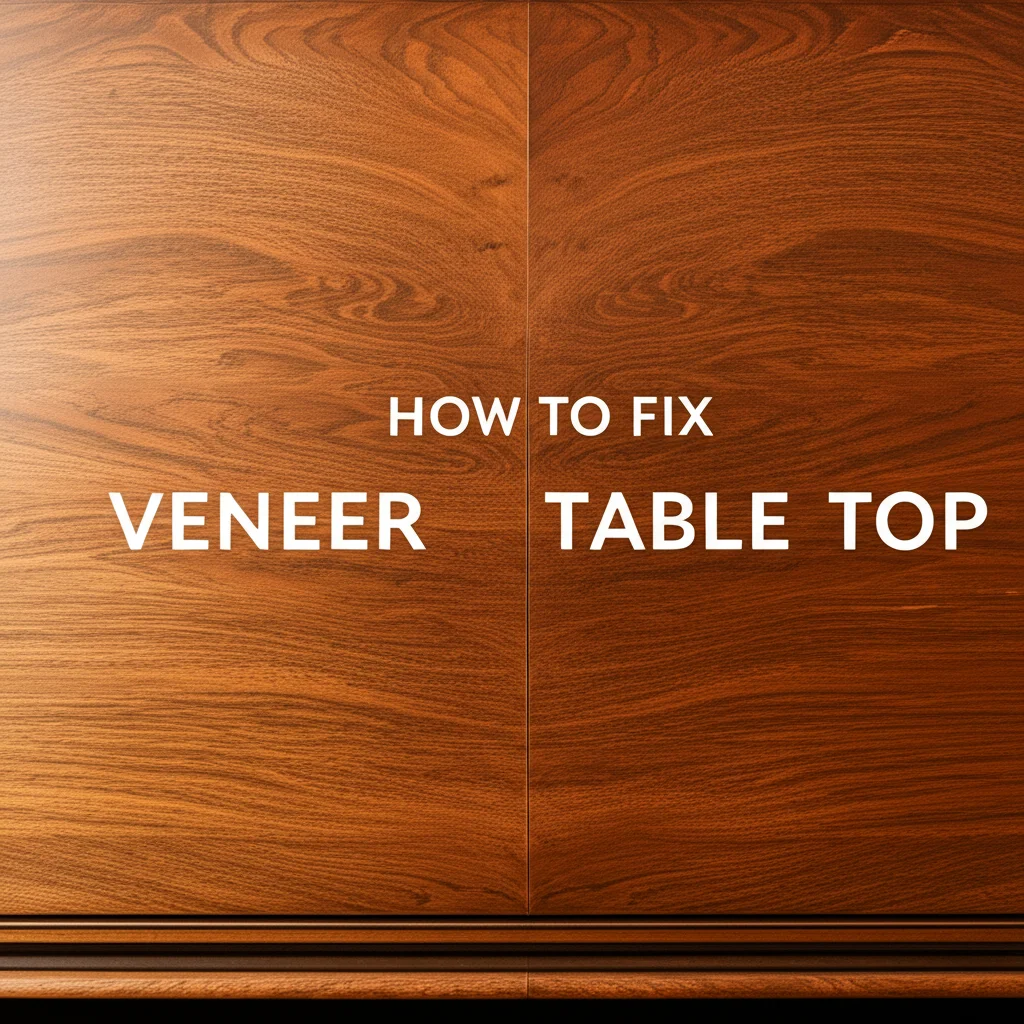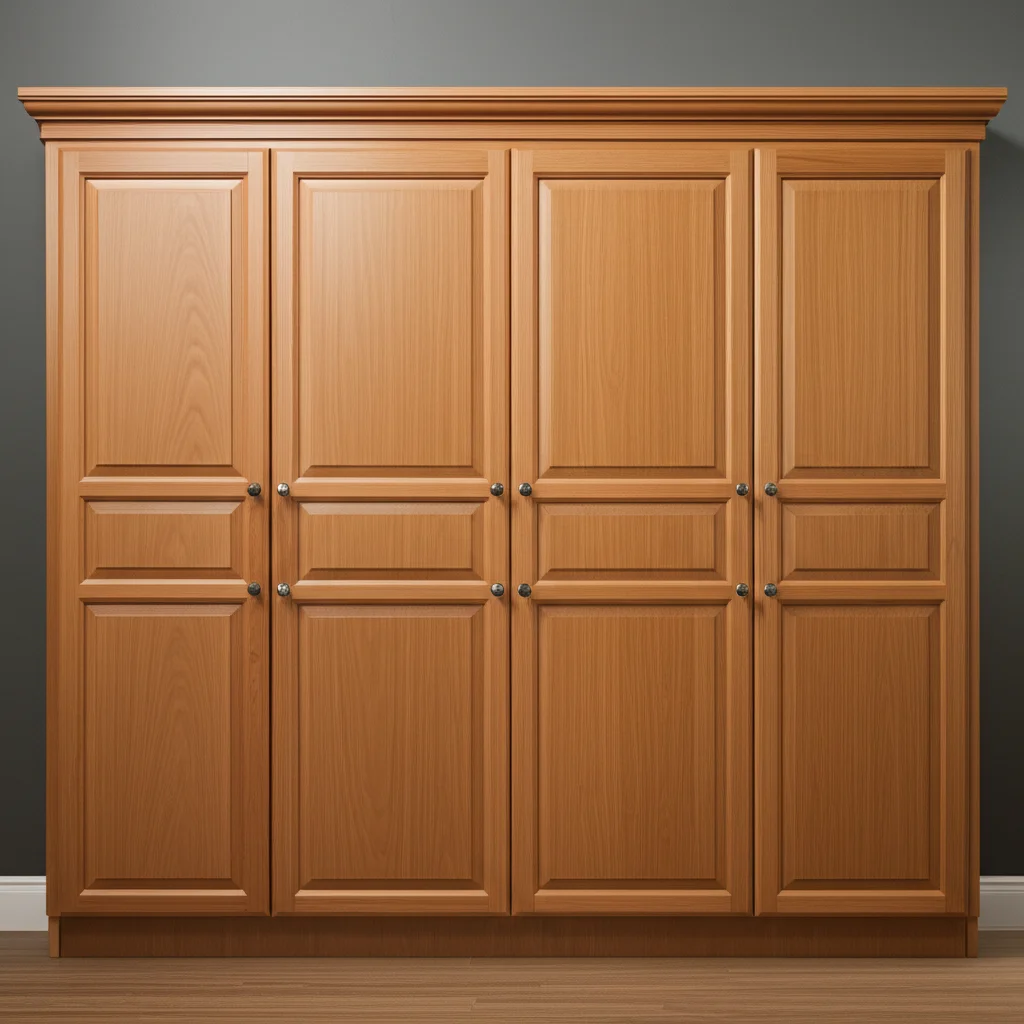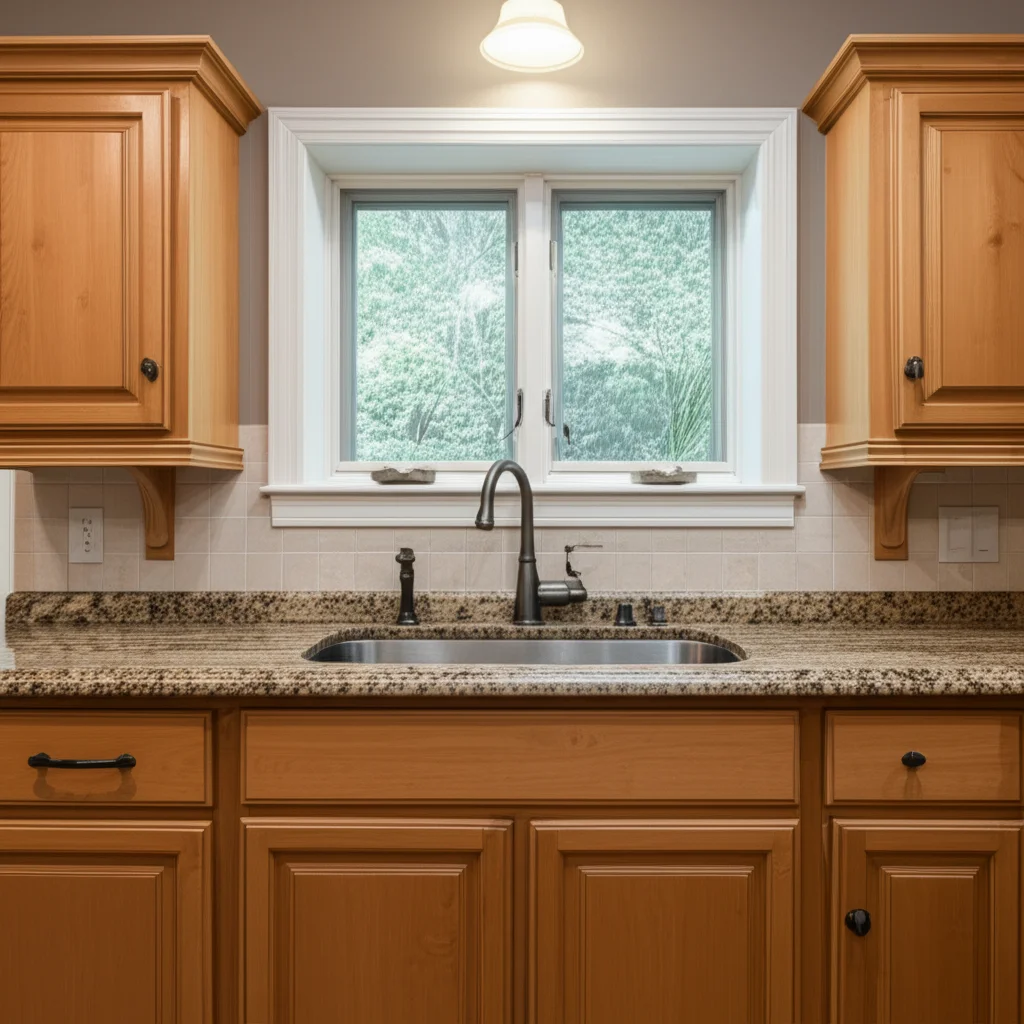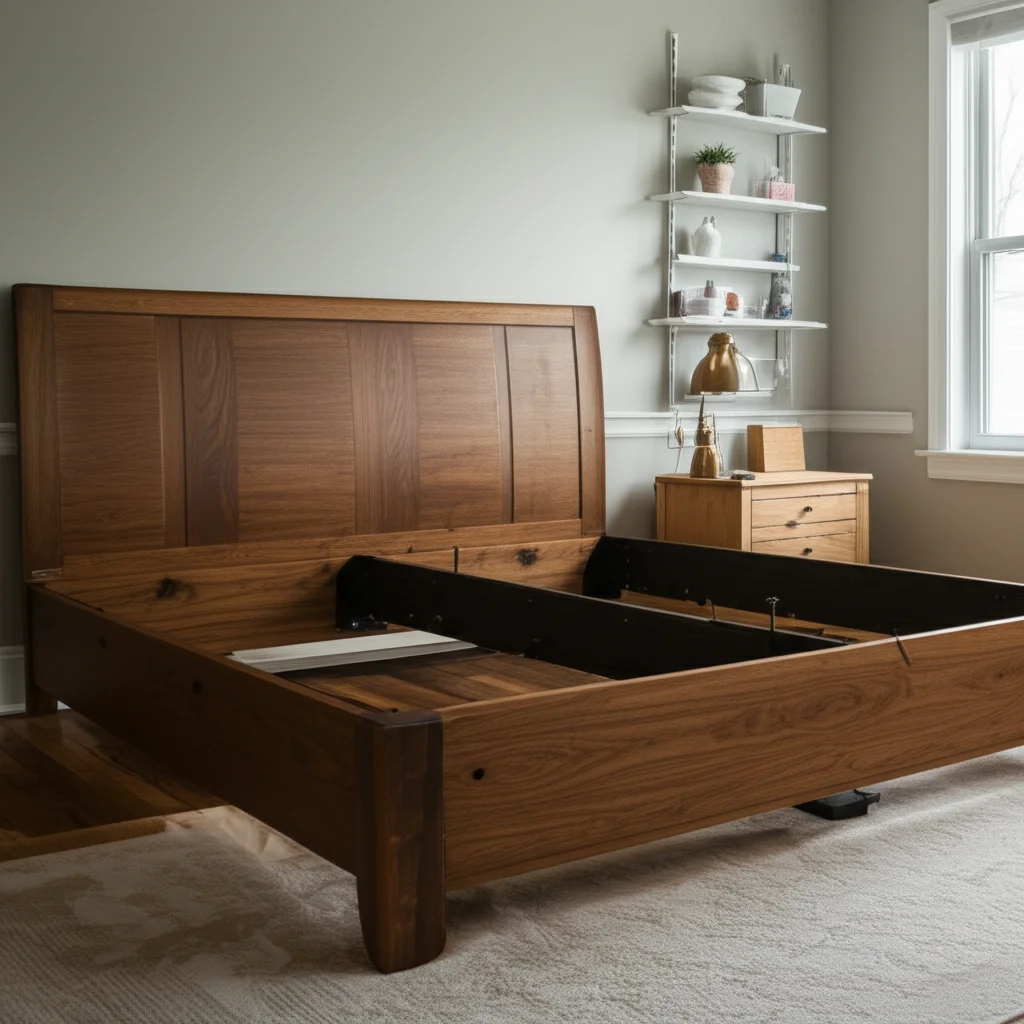· Todd Martin · Home Improvement · 19 min read
How To Fix Veneer Table Top

Fix Veneer Table Top: A Comprehensive DIY Guide
A veneer table top adds beauty and elegance to any room. Unfortunately, these surfaces are prone to damage over time. Common issues include bubbles, chips, scratches, and peeling veneer. You do not need to replace the entire piece of furniture.
I know how frustrating it feels to see your favorite table lose its charm. You can often restore your table with some simple tools and techniques. This guide will walk you through the process step-by-step. We will cover common types of damage, necessary tools, and detailed repair methods.
Takeaway
You can restore your veneer table top’s beauty and extend its life with common tools and materials. Focus on these key steps for successful repair:
- Carefully assess the type and extent of veneer damage.
- Gather the correct tools and adhesives for each specific repair.
- Address bubbles by cutting and re-gluing the veneer, often with heat.
- Reattach peeling sections using strong wood glue and firm clamping.
- Fill chips and gouges with wood filler, then sand and blend.
- Always finish with appropriate sanding and a protective topcoat.
How do you fix a veneer table top?
You can fix a veneer table top by carefully assessing the damage, then applying specific repair techniques. This process includes re-gluing loose or bubbled sections, filling in chips or scratches with wood filler, and then sanding and refinishing the surface. This restores the table’s appearance and protects it from future harm.
Understanding Veneer and Common Damage
Veneer is a thin layer of real wood or plastic material applied over a less expensive core, such as particle board or MDF. This construction allows for beautiful wood finishes at a lower cost than solid wood. However, veneer is susceptible to certain types of damage. Understanding these issues is the first step to a successful repair.
We need to know what we are dealing with. Common problems include aesthetic issues and structural damage. Ignoring minor damage can lead to bigger problems later on. Early intervention saves time and money.
What Causes Veneer Damage?
Many factors contribute to veneer damage. Water exposure is a major culprit. Spills left on the surface can seep under the veneer, causing it to lift or bubble. Humidity changes also affect veneer. Wood expands and contracts with moisture, leading to cracking or warping.
Physical impacts are another common cause. Dropping objects, dragging items across the surface, or even general wear and tear can result in chips and scratches. Heat can also delaminate veneer, causing bubbles or peeling. Placing hot dishes directly on the table without protection can cause significant damage.
Types of Veneer Damage You Might Encounter
- Bubbles and Blisters: These occur when the adhesive beneath the veneer fails, causing air pockets. Heat and moisture often cause these. The veneer lifts away from the core material, creating a raised area.
- Peeling and Lifting Edges: The adhesive loses its grip on edges or corners. This often happens from wear, moisture, or poor initial bonding. This exposes the core material underneath.
- Chips and Gouges: Small pieces of veneer break off, usually from impact. This exposes the core material and looks unsightly. These can vary in size from tiny nicks to larger missing sections.
- Scratches and Dents: Surface damage that does not break the veneer completely. Scratches can be shallow or deep. Dents are indentations in the surface.
- Water Damage and Stains: Water leaves white rings or dark spots. Severe water damage can cause the veneer to swell or warp. This affects both the appearance and the integrity of the veneer.
Identifying the specific type of damage helps you choose the right repair method. Some issues require simple solutions, while others demand more extensive work. A careful assessment saves you from unnecessary effort.
Essential Tools and Materials for Veneer Repair
You need the right tools and materials to fix a veneer table top effectively. Having everything ready before you start makes the repair process smoother and more efficient. Do not rush into the repair without proper preparation. I always lay out all my items beforehand.
The specific items you need will vary slightly based on the type of damage. However, a core set of tools is essential for most veneer repair projects. Investing in quality tools will also make the job easier. You will appreciate having the right equipment for precision tasks.
Must-Have Tools and Adhesives
- Utility Knife or Craft Knife: Essential for cutting and trimming loose or bubbled veneer with precision. A sharp blade is crucial for clean cuts.
- Wood Glue or Veneer Glue: Choose a high-quality wood glue that dries clear and offers strong adhesion. Standard PVA wood glue works for most repairs. Contact cement is good for larger areas.
- Iron (Household Iron): Used with a damp cloth to reactivate old adhesive under bubbles or to help new glue bond. Ensure it is clean and does not have residue.
- Clamps and Weights: Necessary to apply consistent pressure while glue dries. C-clamps, bar clamps, or even heavy books can work. Use cauls (flat pieces of wood) to distribute pressure.
- Sandpaper: Various grits are needed (150, 220, 320 grit) for smoothing repaired areas and preparing for finish. Sanding blocks help ensure even pressure.
- Wood Filler or Wood Putty: For filling chips, gouges, and deep scratches. Choose a color that matches your veneer or one that can be stained.
- Clean Rags and Sponges: For cleaning surfaces, applying finishes, and wiping away excess glue. Microfiber cloths are excellent for dust.
- Painters Tape: For masking areas you do not want to get glue or finish on. Also useful for holding small pieces in place temporarily.
Optional but Recommended Supplies
- Veneer Patches: Small sheets of veneer for replacing missing sections. Try to match the grain and color of your table.
- Stains and Finishes: To match the existing color and protect the repaired area. Polyurethane, lacquer, or shellac are common choices. Always test on an inconspicuous area first.
- Gloves and Safety Glasses: Protect your hands from glue and your eyes from dust or chemical splashes. Safety is always important when doing DIY projects.
- Heat Gun: An alternative to an iron for reactivating adhesive, offering more focused heat. Use with caution to avoid scorching.
- Plastic Spreader or Putty Knife: For applying wood filler smoothly and evenly. A flexible spreader helps achieve a flat surface.
- Denatured Alcohol or Mineral Spirits: For cleaning the surface before and after repairs, especially to remove old finishes or residue.
- Color-Matching Kits: For tinting wood filler or stains to perfectly blend with your veneer. These often come with various pigments.
Gathering these items before you begin will make your repair project much smoother. You will avoid interruptions and complete the job more efficiently. A well-prepared workspace is key to a successful repair.
Repairing Bubbles and Blisters in Veneer
Bubbles and blisters are common issues with veneer table tops. They occur when the adhesive bond between the veneer and the core material weakens. This is often due to moisture, heat, or age. Fixing these issues early prevents larger problems from developing. I find this method effective for most bubble types.
You can often re-adhere the veneer without replacing it. The goal is to reactivate the old glue or introduce new glue under the bubble. This technique requires patience and precision. A successful repair will make the bubble disappear completely.
Method 1: Fixing Small Bubbles with Heat (Iron Method)
This method works best for bubbles where the old adhesive is likely still present and can be reactivated. It is the least invasive approach. Always test this method on a hidden area first if you are unsure about your finish.
- Clean the Area: Wipe the surface around the bubble with a damp cloth. Ensure it is free of dust and grime. Let the area dry completely before proceeding.
- Prepare the Iron: Set a household iron to a medium heat setting (no steam). Make sure the iron plate is clean. You do not want to transfer dirt to your table.
- Damp Cloth Application: Place a clean, damp cloth over the bubble. The cloth should be moist but not dripping wet. This protects the veneer from direct heat and creates steam.
- Apply Heat: Press the warm iron firmly onto the damp cloth directly over the bubble. Hold it for 10-15 seconds. Lift the iron and cloth to check the bubble. Repeat if necessary, moving the iron slightly to distribute heat. The heat reactivates the old glue, and the pressure helps it re-bond.
- Apply Pressure: Once the bubble flattens, immediately place a flat board or heavy books over the area. Apply firm, even pressure for several hours or overnight. This ensures the glue cures properly.
Method 2: Fixing Larger or Stubborn Bubbles (Cutting and Gluing)
If the heat method does not work, or if the bubble is very large, you might need to cut and re-glue the veneer. This method is more involved but offers a more permanent fix. Do not worry; it is not as intimidating as it sounds.
- Carefully Cut the Bubble: Use a very sharp utility knife to make a small slit along the grain of the veneer, centered on the bubble. Make the cut as thin and inconspicuous as possible. A single straight cut is often best.
- Lift and Clean: Gently lift the edges of the cut veneer. Use a clean rag or a cotton swab to remove any dust or debris from underneath the lifted veneer. Ensure the surface is perfectly clean for adhesion.
- Apply New Glue: Insert a thin layer of wood glue or veneer glue under the lifted edges of the veneer through the slit. Use a small syringe or a thin applicator to ensure the glue reaches the entire area under the bubble. Do not use too much glue; excess glue can cause new problems.
- Press Down: Press the veneer down firmly, squeezing out any excess glue. Wipe away any squeezed-out glue immediately with a damp cloth. This prevents dried glue from showing on the surface.
- Apply Pressure: Cover the repaired area with wax paper to prevent glue from sticking to your clamping surface. Place a flat board or heavy weights on top. Apply firm, even pressure for at least 24 hours. The pressure is crucial for the glue to bond properly.
- Smooth and Finish: After the glue dries, gently sand the repaired area with fine-grit sandpaper (220-320 grit) to smooth any irregularities. If the finish is damaged, you may need to apply a small amount of new finish to blend the repair. For more extensive issues, you might consult resources on how to fix warped veneer on furniture.
Remember, patience is key with veneer repair. Allow ample drying time for the glue to set properly. This ensures a lasting repair.
Addressing Peeling and Loose Veneer
Peeling or loose veneer is a common sign of adhesive failure. This often happens on the edges of a table top or in areas subject to frequent contact. When veneer peels, it can snag, chip, and quickly worsen. You can usually reattach it without much difficulty. I have brought many pieces back to life this way.
The key to fixing peeling veneer is thorough cleaning and strong, even pressure during drying. Do not rush this part of the process. A proper bond prevents the veneer from peeling again.
Steps for Reattaching Peeling Veneer
- Clean the Area: First, carefully lift the peeling veneer. Use a utility knife or a thin spatula if needed. Gently scrape away any old, brittle adhesive from both the underside of the veneer and the core material. You can use a damp cloth to clean dust and grime. Allow the surfaces to dry completely. A clean surface ensures better adhesion for the new glue.
- Apply New Adhesive: Apply a thin, even layer of quality wood glue to both the underside of the veneer and the exposed core material. Use a small brush or a glue spreader to ensure full coverage. Be careful not to use too much glue; excess will squeeze out and create a mess. A good, strong wood glue will create a lasting bond.
- Press and Align: Carefully press the veneer back into its original position. Align the edges perfectly. If the veneer has a grain pattern, ensure it matches the surrounding area. You want it to look seamless.
- Wipe Excess Glue: Immediately wipe away any glue that squeezes out with a damp cloth. Dried glue is hard to remove and can mar the finish. Do this gently so you do not disturb the veneer.
- Apply Pressure (Clamping is Key):
- Small Sections: For small areas, use painters tape to hold the veneer down firmly. You can also place heavy books or weights on top.
- Edges: Use clamps with cauls (flat pieces of wood wrapped in wax paper) to distribute pressure evenly along the edge. The cauls protect the veneer from clamp marks. Tighten the clamps just enough to hold the veneer firmly without crushing it.
- Large Sections: Place wax paper over the glued area. Then, put a flat board on top, followed by heavy weights or additional clamps. The more even the pressure, the better the bond.
- Drying Time: Allow the glue to dry completely. This usually takes at least 24 hours, but some glues require more time. Do not remove the pressure prematurely. Patience ensures a strong, lasting bond for your veneer table top.
- Final Touches: Once dry, remove the clamps and tape. Gently sand the repaired area with fine-grit sandpaper (220-320 grit) to smooth any slight unevenness. If the original finish was damaged, apply a matching finish to protect the repair and blend it with the rest of the table.
This process is reliable for reattaching most peeling veneer. It restores the structural integrity and appearance of your table. Always work in a well-ventilated area when using glues and finishes.
Mending Chips and Scratches in Veneer
Chips and scratches are common blemishes on veneer table tops. They can detract from the table’s appearance and, if deep enough, expose the core material to moisture. Fortunately, you can repair most chips and scratches yourself. This process involves filling, leveling, and blending the damaged area. I enjoy seeing the transformation.
The key is to create a repair that blends seamlessly with the surrounding veneer. This requires careful color matching and smooth application. Do not rush the blending stage.
Fixing Chips and Gouges
Chips are areas where a piece of veneer is missing. Gouges are deep indentations.
- Clean the Damaged Area: Use a clean cloth to wipe away any dust or debris from the chip or gouge. The area needs to be clean for the filler to adhere properly.
- Select Your Filler: Choose a wood filler or wood putty that closely matches the color of your veneer. If you cannot find an exact match, choose a neutral color that you can stain later. Some fillers are specifically designed to be stainable.
- Apply Filler: Use a plastic spreader or a small putty knife to apply the wood filler into the chip or gouge. Press it firmly to ensure it fills the void completely. Overfill the area slightly. This allows for sanding down to a flush surface.
- Allow to Dry: Let the filler dry completely according to the manufacturer’s instructions. Drying times vary by product. Do not rush this step.
- Sand Smooth: Once dry, carefully sand the excess filler using fine-grit sandpaper (180-220 grit). Sand in the direction of the wood grain. The goal is to make the filled area perfectly flush with the surrounding veneer. Increase to finer grits (320-400) for a smoother finish.
- Color Match (if needed): If your filler is not an exact match, use a wood stain or touch-up markers to blend the color. Test the stain on a hidden area first. Apply thin layers until the color matches. You can also refer to guides on how to fix a crack in wood furniture for similar techniques on wood repair.
Repairing Scratches and Dents
Scratches can range from minor surface abrasions to deep lines. Dents are impressions in the surface.
- Clean the Surface: Clean the scratched or dented area with a soft, damp cloth. Remove all dirt and oils.
- For Light Scratches:
- Touch-Up Pens/Markers: For very light scratches, a veneer touch-up pen or furniture marker in a matching color can hide the scratch effectively. Apply lightly and wipe excess.
- Walnut/Pecan Method: Rubbing a walnut or pecan kernel over a light scratch can help hide it. The natural oils and color fill and blend.
- Furniture Polish/Wax: Apply a good quality furniture polish or wax. This can help fill shallow scratches and restore shine.
- For Deeper Scratches and Minor Dents:
- Wood Filler (Thin Application): For deeper scratches that penetrate the veneer, apply a very thin layer of color-matched wood filler. Use a plastic spreader to press it into the scratch. Scrape off excess.
- Steam Method (for Dents): For dents, place a damp cloth over the dent. Lightly press a warm iron (low heat, no steam) onto the cloth for a few seconds. The steam may cause the compressed wood fibers to swell and rise. Repeat if necessary. This works best for true wood dents, not for veneer that is broken.
- Sand and Finish: After filling or steaming, gently sand the area with fine-grit sandpaper (320-400 grit) until smooth. Apply a small amount of matching finish to protect the repair.
Always work slowly and methodically. Blending the repair to make it invisible is the true mark of a successful fix. A well-repaired chip or scratch will significantly improve the appearance of your veneer table top.
Restoring Water-Damaged Veneer Table Tops
Water damage is a common and often distressing problem for veneer table tops. It can lead to unsightly stains, swelling, and even delamination of the veneer from the core. However, many forms of water damage are repairable. You do not always need to discard a water-damaged table. I have successfully restored several pieces from water spots.
The key is to address the water damage quickly and thoroughly. Different types of water damage require specific approaches. Understanding the nuances will help you achieve the best outcome.
Identifying Water Damage
- White Rings or Haze: Often caused by moisture trapped in the finish layer. This is usually the easiest to fix.
- Dark Spots or Stains: Indicates water has penetrated deeper, possibly into the veneer itself or even the core material.
- Swelling or Warping: Severe water penetration has caused the wood fibers to expand. This can lead to bubbles or lifting of the veneer.
- Peeling: The adhesive bond has failed completely due to prolonged moisture exposure.
Repairing White Rings or Haze
White rings are typically surface-level issues affecting the finish, not the veneer itself.
- Clean the Area: Wipe the table top with a clean, damp cloth to remove any surface dirt. Dry it completely.
- Apply a Gentle Abrasive: Rub a small amount of non-gel toothpaste, petroleum jelly, or a mixture of baking soda and water onto the white ring. Use a soft cloth and rub gently in the direction of the wood grain.
- Wipe Clean: After a few minutes, wipe off the residue with a clean, damp cloth. Buff the area with a dry cloth. Repeat if necessary.
- Reapply Finish: Once the ring is gone, apply a furniture polish or wax to protect the area and restore shine.
Addressing Dark Spots and Stains
Dark spots mean the water has penetrated the veneer. This requires more intervention.
- Apply Oxalic Acid: For severe dark water stains, you can use oxalic acid (wood bleach). Mix according to package directions.
- Test First: Always test the oxalic acid on an inconspicuous area of the table first. It can lighten wood.
- Apply and Rinse: Apply the solution to the dark stain with a brush or sponge. Let it sit for a few minutes, then rinse thoroughly with clean water. You may need to neutralize with a baking soda and water solution after.
- Dry and Sand: Allow the area to dry completely. Gently sand with fine-grit sandpaper to smooth the surface.
- Refinish: You will likely need to re-stain and refinish the area to match the surrounding veneer. For general knowledge on repairing extensive water damage, you can also consult guides like how to fix water damaged swollen wood table.
Repairing Swollen or Warped Veneer
Swelling or warping means the wood core or veneer has absorbed a significant amount of moisture.
- Dry Thoroughly: First, ensure the table is completely dry. Move it to a dry, well-ventilated area. You might use fans but avoid direct heat, which can cause cracking. This could take several days.
- Gentle Pressure: If the swelling is minor, sometimes placing heavy books on a flat board over the swollen area can help flatten it as it dries.
- Re-gluing (if lifting): If the veneer has bubbled or lifted due to swelling, follow the steps for “Repairing Bubbles and Blisters” or “Addressing Peeling and Loose Veneer” discussed earlier. This involves cutting, gluing, and clamping.
- Sanding and Refinishing: Once dry and flat, you will need to sand the affected area to smooth any unevenness. Start with 180-grit sandpaper and progress to finer grits. Then, re-stain and apply a new protective finish. For more general advice on fixing swollen wood, you might find information on how to fix water damaged swollen wood furniture helpful.
Dealing with water damage requires patience. Allowing proper drying time and applying correct techniques will restore your veneer table top. Prevention is also key: use coasters and wipe spills immediately.
Finishing and Protecting Your Repaired Veneer
After you have completed your veneer repairs, the job is not quite done. The final steps involve properly finishing and protecting your veneer table top. This ensures the repairs blend seamlessly and the entire surface is durable. A good finish enhances the beauty of the veneer and guards against future damage. I always feel a sense of accomplishment after this stage.
Applying a new finish provides an added layer of protection. It also unifies the appearance of the table. You want the repaired areas to disappear into the overall look of the table.
Preparing the Surface for Finishing
Before applying any finish, the table top needs to be perfectly prepared. This is crucial for a smooth and lasting result.
- Thorough Cleaning: Wipe the entire table top with a clean, lint-free cloth. Use a wood cleaner or a mixture of water and a mild dish soap to remove any dirt, grease, or old polish residue. Then, wipe with a damp cloth, followed by a dry one. Ensure no dust remains. You can find more tips on how to effectively clean a wood table.
- Sanding for Smoothness:
- For Spot Repairs: Gently sand only the repaired areas with fine-grit sandpaper (320-400 grit) to make them perfectly smooth and flush with the surrounding veneer.
- For Full Refinish: If you are applying a new finish to the entire table top, lightly sand the entire surface with 220-grit sandpaper. Then move to 320-grit. Sand in the direction of the wood grain. This scuffs the existing finish, allowing the new finish to adhere better. Do not sand through the veneer.
- Dust Removal: After sanding, use a tack cloth or a vacuum with a brush attachment to remove all sanding dust. Dust can cause bumps and imperfections in your new finish.





